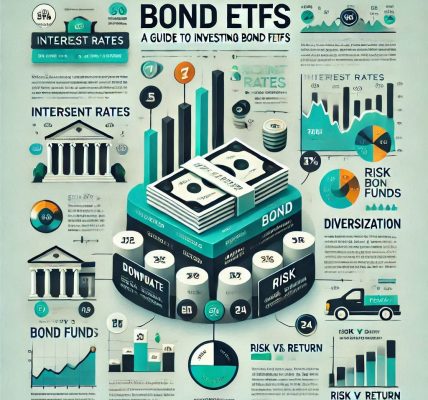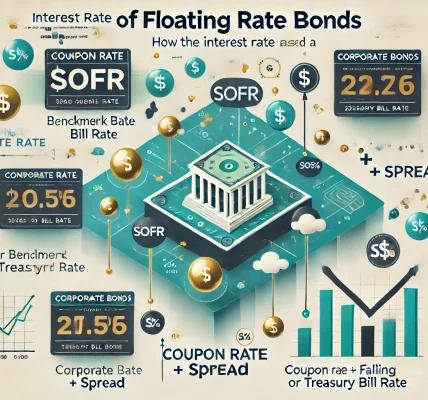Introduction
Investors are often torn between stocks and bonds when building their portfolios. While stocks offer high growth potential, they come with greater risk. Bonds, on the other hand, provide stability but often yield lower returns. What if you could get the best of both worlds? Convertible bonds are a unique financial instrument that blends the characteristics of both equities and fixed-income securities, making them an attractive option for diversified investment portfolios.
In this article, we’ll explore what convertible bonds are, how they work, their benefits and risks, and whether they are the right investment choice for you.
What Are Convertible Bonds?
A convertible bond is a type of corporate bond that gives the bondholder the right to convert the bond into a predetermined number of common stock shares of the issuing company. This conversion can take place at specific times during the bond’s life, typically at the discretion of the investor.
Convertible bonds are often issued by companies that seek to raise capital without immediately diluting their stock value. They provide fixed interest payments like traditional bonds while offering the potential for capital appreciation if the company’s stock price rises.
Key Features of Convertible Bonds
✅ Fixed Interest Payments: Like regular bonds, convertible bonds pay periodic interest, known as coupons.
✅ Conversion Option: Investors can convert their bonds into a fixed number of shares.
✅ Maturity Date: If not converted, the bondholder receives the principal amount at maturity.
✅ Conversion Price: The predetermined stock price at which the bond can be converted into shares.
✅ Conversion Ratio: Specifies how many shares the investor will receive per bond.
How Do Convertible Bonds Work?
Let’s break down the working of convertible bonds with a simple example:
➡ Company XYZ issues a 5-year convertible bond with a face value of $1,000, an annual 5% coupon rate, and a conversion ratio of 20.
➡ This means the bondholder receives $50 in interest annually and has the right to convert the bond into 20 shares of Company XYZ stock. ➡ If the stock price rises above the conversion price, converting the bond into shares becomes profitable. ➡ If the stock price falls, the investor can choose to hold the bond until maturity and receive the principal.
This dual-benefit structure makes convertible bonds an attractive investment option.
Advantages of Investing in Convertible Bonds
1️⃣ Downside Protection
Unlike stocks, convertible bonds provide fixed interest payments and principal protection if the stock price declines. This makes them less risky than direct equity investments.
2️⃣ Equity Upside Potential
If the issuing company’s stock performs well, the investor can convert the bond into shares, benefiting from stock price appreciation.
3️⃣ Portfolio Diversification
Convertible bonds offer a mix of income and growth, making them a great addition to a diversified portfolio.
4️⃣ Lower Interest Rates for Issuers
Companies that issue convertible bonds often pay lower interest rates compared to traditional bonds, as investors are compensated by the conversion feature.
5️⃣ Tax Efficiency
In some cases, convertible bonds may offer tax advantages, especially when compared to dividend-paying stocks.
Risks Associated with Convertible Bonds
⚠ Stock Price Volatility: If the stock price remains below the conversion price, the bond behaves like a regular bond and might not provide additional returns.
⚠ Lower Coupon Payments: Convertible bonds generally offer lower interest rates compared to non-convertible bonds due to their stock conversion feature.
⚠ Call Risk: Some issuers may redeem the bonds early, forcing investors to convert or accept lower yields.
⚠ Credit Risk: If the issuing company faces financial difficulties, there is a risk of default or downgrade in bond ratings.
Types of Convertible Bonds
1️⃣ Vanilla Convertible Bonds – The standard type, allowing conversion into stock at a fixed ratio and price.
2️⃣ Mandatory Convertible Bonds – Must be converted into stock at maturity, usually in a set number of shares.
3️⃣ Reverse Convertible Bonds – The issuing company has the right to convert the bond into equity if stock prices meet certain conditions.
4️⃣ Contingent Convertible Bonds (CoCos) – Primarily used in banking, converting automatically if the issuer faces financial trouble.
Who Should Invest in Convertible Bonds?
📌 Long-Term Investors: Those who want stability with potential upside gains.
📌 Income Seekers: Investors looking for regular interest payments but willing to take some equity exposure.
📌 Risk-Averse Stock Investors: Equity investors who want lower downside risk.
📌 Diversified Portfolio Holders: Those seeking a mix of bonds and equities in their investment strategy.
How to Invest in Convertible Bonds Online
If you’re interested in adding convertible bonds to your portfolio, here’s how you can do it:
🔹 Brokerage Accounts: Most online brokerages offer access to convertible bonds. 🔹 Exchange-Traded Funds (ETFs): Consider ETFs like the SPDR Bloomberg Convertible Securities ETF (CWB) for diversified exposure. 🔹 Mutual Funds: Some funds specialize in convertible securities, offering active management. 🔹 Direct Purchase: Investors can buy newly issued convertible bonds through bond markets.
Conclusion: Are Convertible Bonds Right for You?
Convertible bonds offer a unique hybrid investment opportunity, balancing income stability and equity growth potential. They are an excellent choice for investors who want fixed returns with a chance to benefit from stock appreciation. However, understanding their risks and features is crucial before investing.
Key Takeaways:
✔ Convertible bonds provide fixed income and equity upside.
✔ They offer downside protection compared to stocks.
✔ Suitable for investors looking for balanced risk-reward profiles.
✔ Research is essential before investing in individual bonds.
By including convertible bonds in your portfolio, you can enjoy a mix of stability and growth, making your investments more resilient to market fluctuations.




